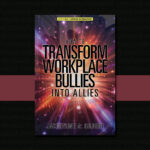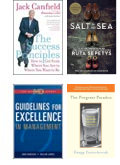What does it mean to appear flexible? The book The Field: The Quest for the Secret Force of the Universe implies that we are all part of an unseen, invisible field of energy that, if we are connected, foments inspiration within us. An unhurried relaxed approach to life allows us to transcend our perceptual boundaries.
Some types however may struggle to achieve gestalt. In his book The Five Personality Patterns, Kessler (2015) explains the rigid personality type has a static energy field that others can sense. He describes “rigid” as unyielding with regard to errant rule-breakers, and overly concerned with meting out punishment for infractions.
For rigid types, the initial response to what might be remotely alarming (for others) is fear—a nervous projection of high alert that repels the happier go lucky who do not take life, and everything in it, as seriously. When blips on the radar register as seismic quakes our priorities may be disproportionate. In other words, performance alone and perfection are not ends in themselves. An extreme variant of “rigid” is OCD, or obsessive-compulsive disorder. In Emotional Vampires at work: Dealing with Bosses and Coworkers who Drain You Dry, Bernstein explains that OCD sufferers spend an inordinate amount of time ensuring minutiae are “done to perfection.”
If the sky is falling down, little attention can be paid elsewhere. “Wooden,” overly controlled, structured, and “too perfect” are the criticisms lobbed at those who think the “horrors of the universe” (Bernstein, 2012) will, as the result of a singular mistake, bury them like volcanic ash. It’s one thing to say that “the difference is in the details,” and still another to be distracted by the mundane and the unimportant.
In The Intuitive Way: The Definitive Guide to Increasing Your Awareness Peirce explains that “. . . there isn’t much difference in outward appearance between possession and obsession” (p. 206). Obsessional focus on being caught may create the very conditions we do not want, because it overshadows reality. In the movie Premonition, the protagonist’s nagging feeling that something bad was about to occur, and her subsequent actions, led to the outcome that she feared the most—the death of her spouse.
The personality types Kessler describes are products of their environment. Rigid types for example exhibit strict rule adherence because they received, growing up, an overabundance of correction, reprimand, lecture, putdowns/insults, and little to middling in the way of positive encouragement. Their personal feelings were never referenced, so they learned to be what others wanted them to be instead of their authentic selves (Kessler, 2015).
If rigid and rule bound is your MO, then you might apply the following to appear less “buttoned up:”
- Be playful/play along. Instead of getting our backs up when someone else is teasing, turn it around, e.g.: “No one in your age group has any manners.” Answer: “They do, I don’t!” Harboring offenses may incite others to go out of their way to get a rise out of us, especially those who enjoy schadenfreude, or delight in the misery or failure of other people. In addition, friendly people who feel the need to walk on eggshells around us might move elsewhere. Nobility entails realizing that everyone can have a bad day and that no one necessarily needs censure (Kessler, 2015).
- Smile. A scowling, scary stare down face creates frown lines that laser may not erase. A frown is enigmatic of “poor me,” an attitude that strengthens the invisible hoop skirt of avoidance that is surrounding us. Smiles are the universal language of welcome, a non-verbal that immediately put others at ease. Positive paranoia (and a focus on gratitude) can shift our attention to create momentum on what’s working in our lives. The Power of Positive Thinking (first published in 1952) is still a must-read.
- Make/accept invitations. A work only attitude limits the possibility that others will reach out to us. Life is a balance—with time for work, play, rest, and family. Ziglar’s goal setting framework is a terrific way to practice discipline so that we can prioritize. As The Little Prince conjectured, what is most important is invisible to the eye. Similarly, in the movie Meet Joe Black a woman on her death bed reminisces about the pretty pictures in her mind’s eye, those treasures of personal experience she will take with her when she dies.
-
References
Bernstein, A. J. (2013). Emotional vampires at work: Dealing with bosses and coworkers who drain you dry. New York, NY: McGraw-Hill Education.
Breathnach, S. B. (1995). Simple abundance: A daybook of comfort and joy. New York, NY: Warner Books.
Kessler, S. (2015). The 5 personality patterns: Your guide to understanding yourself and others and developing emotional maturity. Richmond, CA: Bodhi Tree Press.
McTaggart, L. (2002). The Field: The quest for the secret force of the universe. New York, NY: HarperCollins Publishers, Inc.
Peale, D. N. V. (1990). The power of positive thinking. London, England: Cedar Books.
Peirce, P. (2005). The intuitive way: The definitive guide to increasing your awareness. New York, NY: Atria Paperback, and Hillsboro, Oregon: Beyond Words.
Saint-Exupery, A. (2000). The Little Prince. New York, NY: HarperCollins Publishers.





Recent Comments